INTRODUCTION
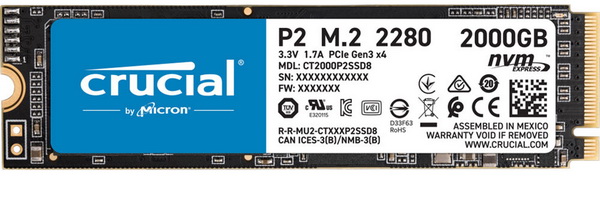
Due to their impressive read & write performance (always compared to mechanical drives and SATA based SSDs), small form factor and several price reductions in 2020 PCIe M.2 NVMe drives currently lead the market in terms of storage media sales. Just like in the past with 2.5" SATA models however entry to mid-level DRAM-less PCIe M.2 NVMe SSDs are clearly outperforming their faster brothers when it comes to sales numbers (higher price/performance ratio, at least for "basic" consumer use) so it's no surprise really that manufacturers have been focusing quite a bit in the release of such models. One such model is the P2 by Crucial released in late 2020 and today with me i have the 2TB capacity model.
Crucial is a global brand of Micron Technology, Inc. Crucial solid-state drives (SSDs) and memory (DRAM) upgrades are compatible with over 100,000 new and old desktops, laptops, workstations and servers. Crucial Ballistix gaming memory delivers a performance edge to gamers and enthusiasts and enhances the overall PC gaming experience. Available worldwide at leading retail and e-tail stores, commercial resellers and system integrators, Crucial products enhance system performance and user productivity. Learn more at www.crucial.com.
The P2 model was released by Crucial last year with a single goal in mind, to surpass their very popular P1 model (review here) at pretty much the same price point. To that end Crucial has equipped the entire P2 line of M.2 NVMe SSDs (currently available in 250GB/500GB/1TB/2TB capacities) with the DRAM-less E13T (PS5013-E13) NAND flash controller by Phison together with 96-layer 3D TLC NAND flash by Micron. The E13T is a 4-channel, single core NAND flash controller which supports various technologies including dynamic write acceleration (SLC pseudo-cache), host memory buffer (HMB), end-to-end data path protection, smartECC (RAID ECC), redundant array of independent NAND (RAIN), thermal monitoring, TRIM, integrated power loss immunity, active garbage collection, AES-256 encryption and TCG Pyrite/OPAL support (Toggle 3.0 and ONFi 4.0 are also supported). Crucial covers the entire like with a 5-year limited warranty and reports an MTBF of 1.5 million hours across all models along with a TBW of 150 for the 250/500GB models, 300 for the 1TB model and 600 for the 2TB model. Needless to say, i don't expect the P2 model to reach the performance numbers recorded by the P5 model so the only question that remains is what kind of performance can one expect.
SPECIFICATIONS AND FEATURES

PACKAGING AND CONTENTS
Crucial uses their typical box to ship the P2 line in so at the front you can see their logo, the product name and of course the capacity.
At the rear Crucial mentions all the "extras" consumers will benefit from by getting a P2 SSD.
Just the quick start guide is bundled with the drive.
THE P2 2TB
Just like the P5 the P2 follows the typical 2280 standard (22mm in width and 80mm in length) and comes with a blue information sticker on top.


 Beneath the sticker we find the PS5013-E13 NAND flash controller by Phison along with four 96L 3D TLC NAND flash modules by Micron (512GB in capacity each).
Beneath the sticker we find the PS5013-E13 NAND flash controller by Phison along with four 96L 3D TLC NAND flash modules by Micron (512GB in capacity each).
The opposite side of the PCB is completely empty and only has a 2D barcode on it.
CRUCIAL STORAGE EXECUTIVE
You can download the Crucial Storage Executive software from the manufacturer website.
The initial screen gives you details of both your system memory and the SSD(s) installed.
The software also allows you to check the drives details including its SMART page.
The sample arrived with the latest firmware installed.
From the sanitize tab you can erase everything on the drive and as for the momentum cache tab well you may try to improve the performance of the drive by using this (this feature effectively uses a piece of your systems RAM to cache the most frequently accessed data).
Flex capacity is yet another feature not supported by the P2 (just like the PSID Revert and namespace management features).
You can try and improve the performance of the drive by using the over-provisioning feature (this will eat some of your empty drive space however).
The self-test can come in handy if you have issues with the drive.
TEST BED
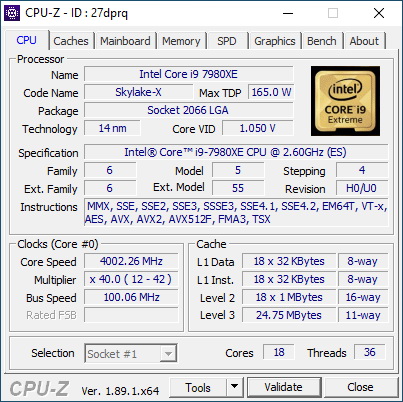

TESTING METHODOLOGY
After over 12 years of testing solid state drives, i’ve concluded that it's almost impossible for any single benchmark suite to accurately measure their performance and that's why in certain benchmark suites we see amazing read/write performance numbers with some drives while in others things are quite different. The reason behind this is that some benchmarking suites are configured to read and write random chunks of data while others read and write constant (sequential) ones. So that's why i always use a very wide selection of benchmarking suites including AIDA64, HD Tach RW, HD Tune Pro, Crystal Disk Mark, Sisoftware Sandra Pro, AS SSD, IOmeter and ATTO. To get the most accurate results each test gets repeated a total of 6 times with the average performance numbers recorded into our charts*. Also, as of February 25th 2015 our results will also include the Storage Networking Industry Association’s (SNIA) IOMeter tests. These tests include a 12 Hour write test used to “simulate” performance degradation over time and a mixed workload test which basically shows what you can expect when using an SSD continuously for roughly two hours. Unfortunately, due to the time required for these tests we repeat them a total of 3 times and not 6 as the above.
Many people have made inquiries about our charts in the past so once again please do keep in mind that the Charts have the average performance numbers of each drive recorded and not the peak (highest) ones. Also, although every single one of these programs can help potential buyers choose the right drive for their needs you should also remember that from any kind of benchmark up to real world usage the gap is not small (and usually most differences will go unnoticed by most people). All tests were performed in a fresh Windows 10 Pro x64 installation complete with every update up to the date of this review.
* Since November 2018 the SSD comparison charts have been divided to 2.5” and M.2 models to reduce their growing size.
** Unless stated otherwise the Ryzen 9 3950x based Test Rig used for M.2 Gen 4 SSD reviews is not located in the lab.
*** As of January 2021 for Gen 3x4 models I’ll be using the Core i9-7980XE test rig (after numerous tests the up to 6% difference in read & write performance compared to the i7-6700 system simply wasn’t enough to justify having an extra test rig around)
TEST RESULTS - AIDA64 / ATTO


TEST RESULTS - HD TACH RW / HD TUNE PRO


TEST RESULTS - SISOFTWARE SANDRA PRO / CRYSTAL DISK MARK


TEST RESULTS - AS SSD / IOMETER


TEST RESULTS - IOMETER SNIA

CONCLUSION
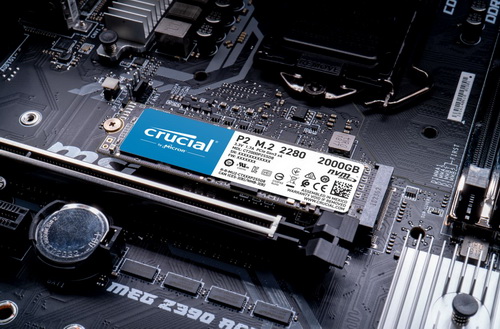
The P2 M.2 NVMe SSD by Crucial had but 1 goal, to surpass in performance its very popular predecessor, the P1 model. Well as you can all easily see in the charts it doesn’t really blow the P1 out of the water. Yes, it does clearly surpass it in ATTO, the mixed SNIA IOMeter test (something which i wasn’t really expecting – this could be due to reduced thermal throttling) and a couple of others but that’s just about it and so i can’t really say that it hit its goal. Of course, there’s always the chance that the sample which arrived in the lab does not perform as it should, if that’s the case (if Crucial feel this is the case) I’ll be sure to get another to test and see.
With a price tag set currently at USD209.99 inside the USA (Amazon.com) and at 238.49Euros inside the EU (Amazon.de) the P2 2TB retails for about the same price as its predecessor, the P1. Still, I do think Crucial should “work” the price of the P2 2TB a bit, based on its performance of course. That being said the P2 2TB M.2 NVMe SSD is a good overall choice for not so demanding users on a budget, anything more than that however and I suggest checking out the faster P5 model.
PROS
- Overall Performance
- Endurance Numbers (600TBW / 1.5 Million Hours MTTF)
- Crucial Storage Executive Software
- 5 Years Limited Warranty
CONS
- Performance Compared To The P1 Model

 O-Sense
O-Sense





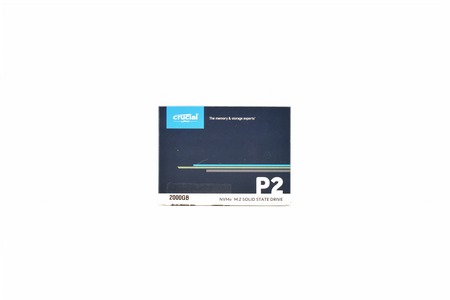




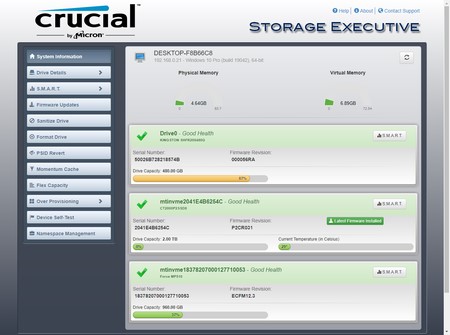











.png)

